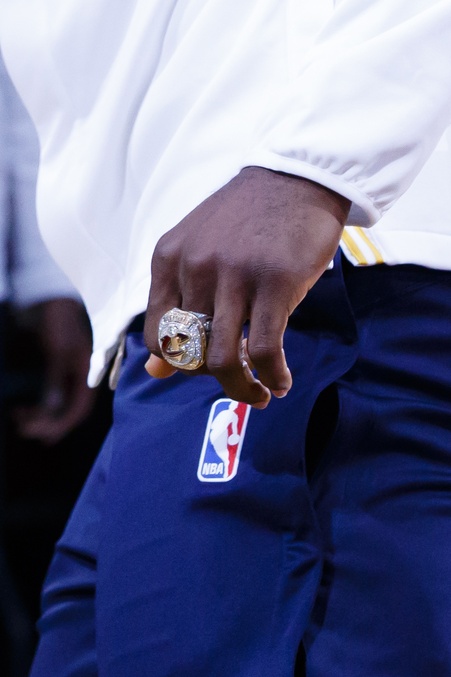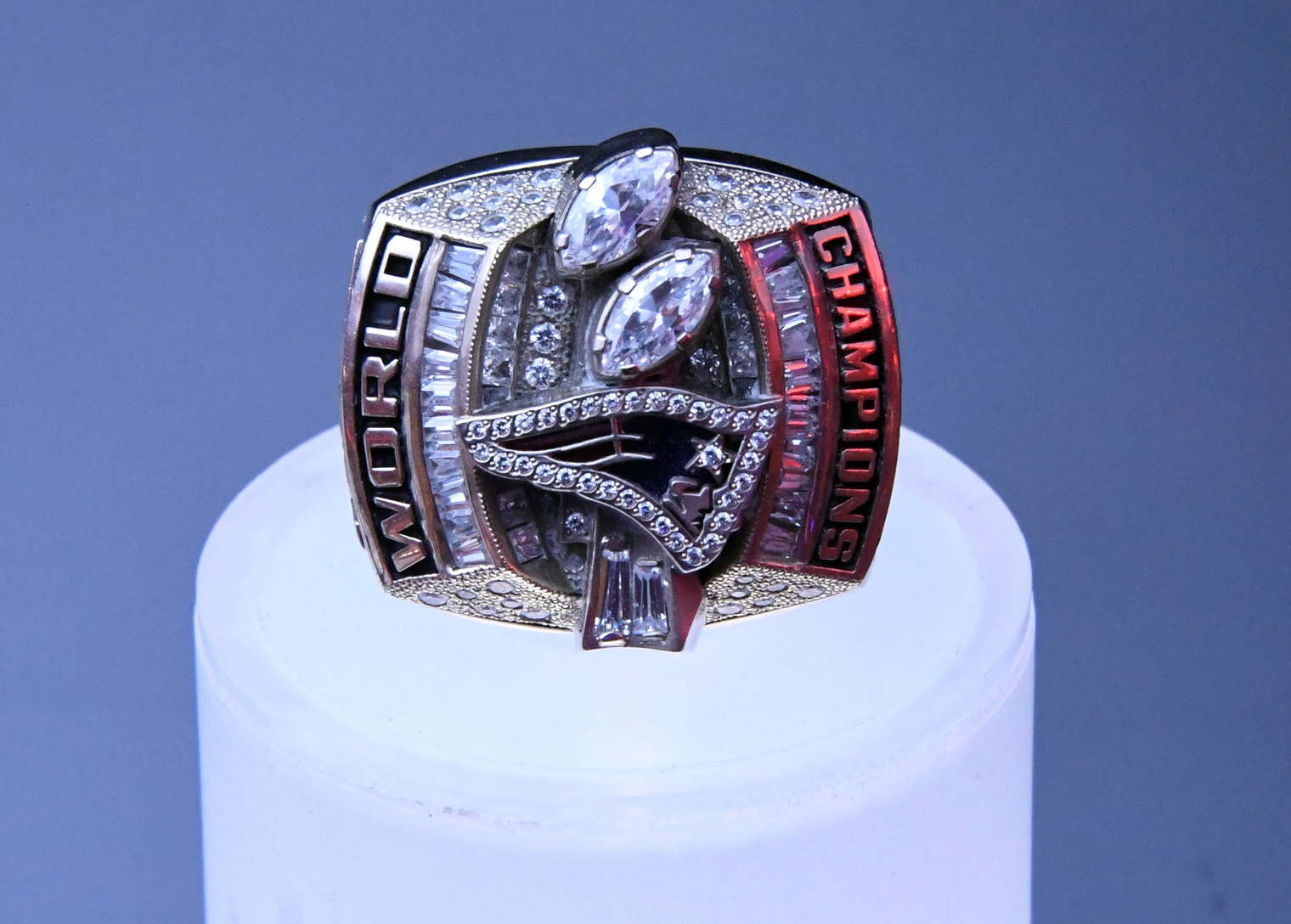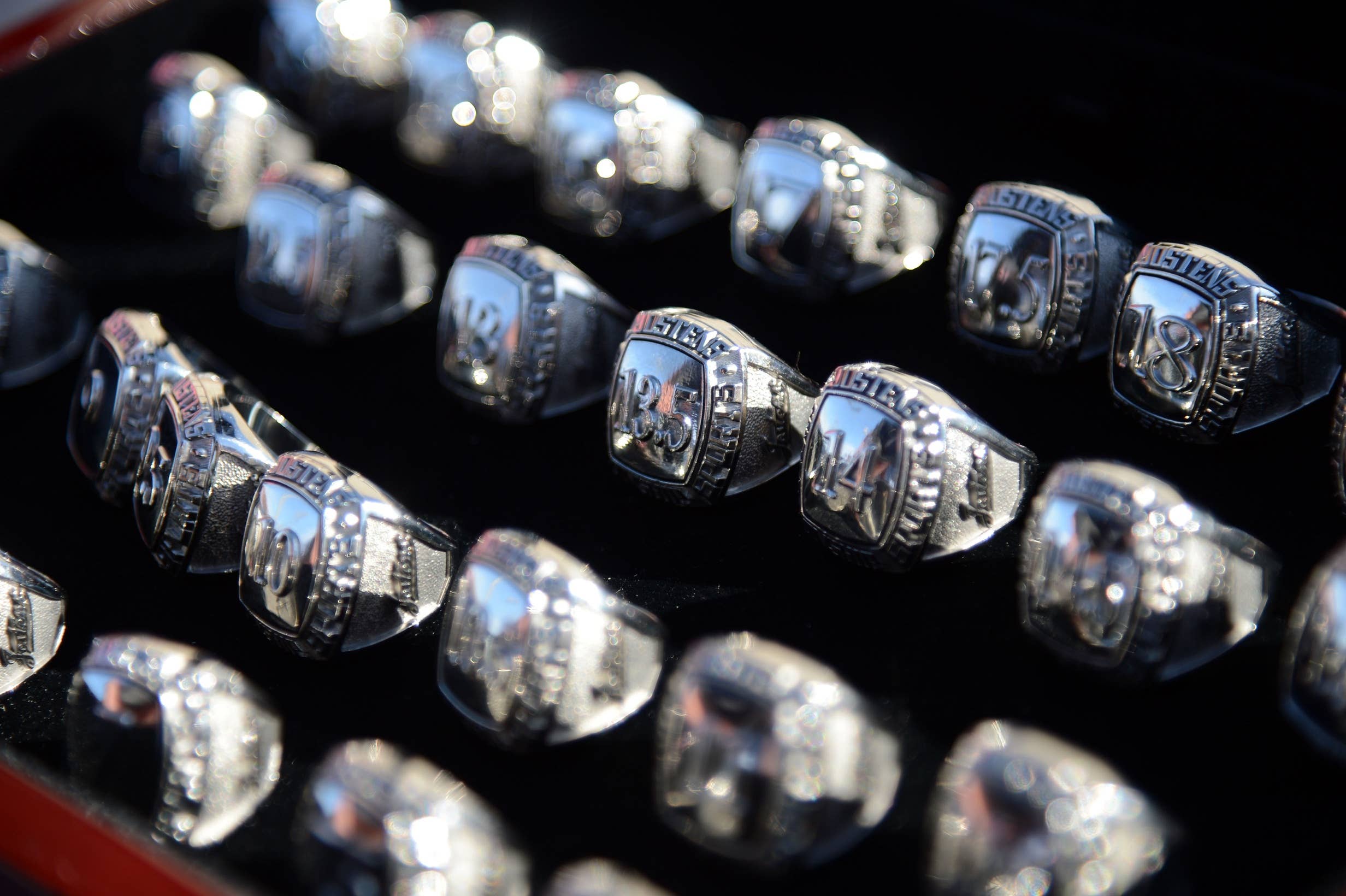
The championship ring represents the apex of achievement in professional sports. No matter the sport, there isn’t a tangible item that can measure sports greatness like a championship ring.
You can’t have a Jordan v. LeBron argument without bringing up Michael’s six rings. You can’t have a conversation with a Yankees fan without them boasting about his team’s 27 rings. And, of course, Browns fans are subjected to years of “no ring” memes poking fun at the team’s half-century absence from the Super Bowl.
Elite athletes often spend their entire careers hunting for a championship ring. Championship rings are conventionally thought to only be available to pro athletes.
But over the last couple of decades, fans and collectors have been able to spend large paychecks to get their favorite player’s championship rings as well.
players usually give up their rings based on what they call the ‘Three Ds’: drugs, divorce, or death.
Heritage Auctions is a firm that offers many ex-players’ championship rings for sale to the general public. Super Bowl XXX MVP Larry Brown’s Cowboys championship ring is currently for sale on the site for $150,000. Chicago Bears lineman William “Refrigerator” Perry’s Super Bowl XX ring was recently sold on the site for $203,000. And if you can’t afford a ring from a star player, you can buy former Patriots practice squad defensive lineman Maurice Anderson’s Super Bowl XXXVI ring for just $65,000.
There are a number of reasons why players put their hallowed championship rings on the market; some do it for charitable causes. Former Patriots safety Je’Rod Cherry, who was on all three of the Patriots’ championship teams in the early 2000s, raffled off his Super Bowl XXXVI ring in 2010. It was his most prized possession, but he said a trip to a Christian youth conference in a poor Ohio town lead him to turn the ring into something greater. The children at the conference were raising money for an orphanage in southeast Asia for victims of sex slavery, and he felt inspired to act.
“I donated my first Super Bowl ring to charity because I went to a Christian youth conference and was moved by what I saw in regards to very financially poor and destitute kids from an impoverished town putting in all the money they had to make a contribution to build an orphanage for kids in southeast Asia that were worse off than them,” Cherry says. “I chose my first ring because it was my most prized possession and I wanted to give not out of poverty, but instead out of the desire to give up what I cherished more for a great cause.”
The raffle raised about $150,000 for various charities.
But scenarios like this are often the exception rather than the rule when it comes to ring sales.

“I talked to one dealer who specifies in rings, and he told me that players usually give up their rings based on what they call the "Three Ds": drugs, divorce, or death,” Rich Mueller, editor of Sports Collectors’ Daily, says.
Chris Ivy, director of sports auctions for Heritage, did not dispute the “Three Ds” notion, but also noted that there are alternative reasons for selling rings, like older athletes looking to downsize or to raise money for their grandchildren’s college education.
“I wouldn’t dispute it, [but] I’d say there’s a lot more reasons than just the Three D’s,” Ivy says.
Some apparent sales along these lines include Lenny Dykstra’s 1986 World Series ring, which was auctioned off for $56,000 in 2009 after he declared bankruptcy and a prescription drug addiction left the former Met in need of cash. Former Raiders cornerback Lester Hayes, according to the Dallas Morning News, sold his Super Bowl XVIII ring for a few hundred dollars in the '90s after losing what he called “A Charles Barkley-kind of bet.”
And, more recently, former NBA All-Star Antoine Walker’s 2006 Heat championship ring was sold for $21,500 after his well-documented financial issues.
This could be why most of the players who sell their rings do so anonymously. While many rings on high-ticket auction sites like Heritage have the player’s name on the page, most do not.
“We never talk about who our consignors are unless we have a name-player collection that we’re promoting,” Ivy says. “So no matter who’s the consignor of record, we typically don’t make that public.”
“People are looking to invest in assets. A lot of people feel that real estate and Wall Street have been maxed out over the years.”
Regardless of motives for selling, the professional championship ring trade is booming. Over the last 15 years, interest, availability, and ring values have grown almost exponentially. Some rings that sold a decade or so ago are now selling for multiple times their original value.
“Babe Ruth’s ring sold quite a while ago. I think that sold probably fifteen years ago and was sold in the low six figures for $100-200,000,” Ivy says. “If that ring came to auction today, I think we’re looking in access of easily over $1 million. Probably $1.5 to $2 million there.”
Several factors have boosted the market in recent years. Along with interest and availability via the internet, new services that are able to authenticate and preserve high-ticket memorabilia like championship rings have helped make this sector more reliable and lucrative than it once was.
“[Authentication] has really helped clean up the market in a lot of ways from was from what it was in the '90s,” Ivy says. “It was a lot more risky to buy these types of pieces. Twenty years ago, just because people didn’t have as much information...there weren’t companies out there providing third party authentication. So with that kind of growth and trust in the industry, they’ve all helped contribute to the increased interest in material and the increased values.”

There are several elements that will dictate the value of a championship ring, including the year, player, team, and condition. Vintage baseball rings, like those from 1950s Yankees teams, remain at the absolute highest end of the market. But Super Bowl rings often do the best out the contemporary rings simply due to their grandiose, flashy nature.
“The key is that a long time ago, the rings weren’t really considered valuable as jewelry. They were really just more commemorative type things,” Mueller says. “But since they get more and more gaudy every year, you have more diamonds and gems on these rings that has made the basic value of the ring itself, whether it’s a championship ring, much more valuable.”
And these commodities are also treated as investments—no different from the way that stocks and bonds are.
“People are looking to invest in assets,” Ivy says. “A lot of people feel that real estate and Wall Street have been maxed out over the years. So people are looking for other assets to own and obviously these are significant assets that people have an interest in, like art.”
So if you’re looking to invest for an early retirement—or even for a little stocking-stuffer for Dad this Christmas—throwing five to six figures on a championship ring might not be the worst idea.

